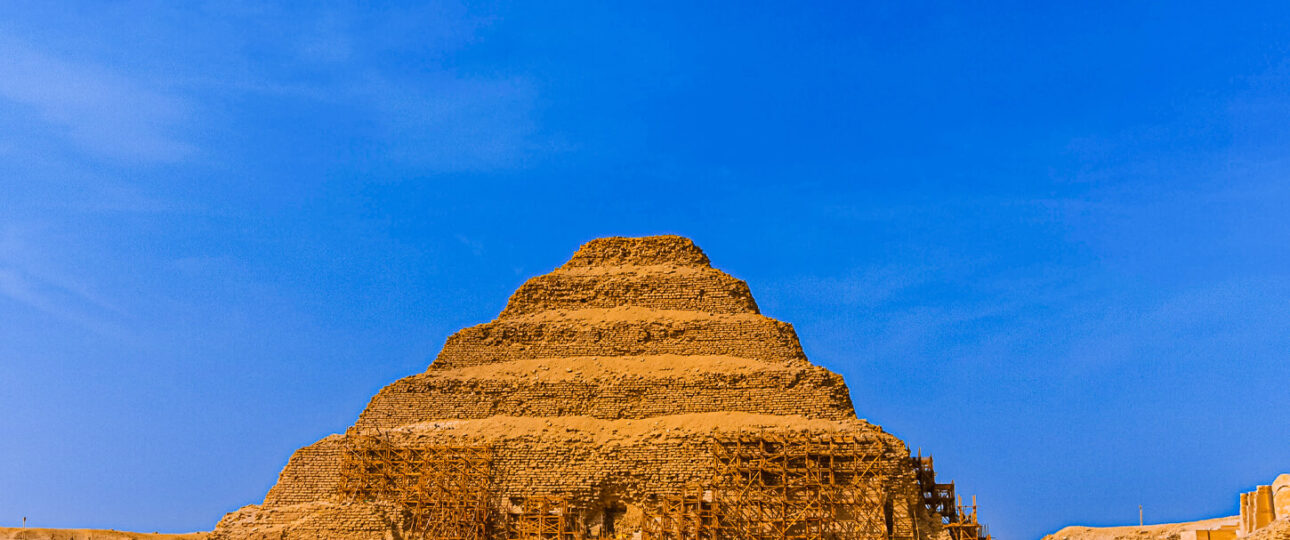Pyramid of Djoser: Ancient Egypt’s Architectural Marvel
Welcome to the world of ancient wonders! In this article, we embark on an extraordinary journey through time, exploring the remarkable Pyramid of Djoser. Also known as the Step Pyramid, this architectural masterpiece is one of the most significant structures in ancient Egyptian history. Join us as we unveil the secrets behind its construction, its historical importance, and the fascinating stories surrounding it.
Pyramid of Djoser
Nestled in the heart of Saqqara, Egypt, the Pyramid of Djoser reigns supreme as an unparalleled feat of engineering and design. Built during the 27th century BCE for Pharaoh Djoser, it was a groundbreaking innovation that revolutionized pyramid construction techniques. The pyramid is a testament to the grandeur and vision of ancient Egyptian civilization.
- Don’t miss out on our Best Time to Travel to Egypt
The Birth of a Masterpiece
Unveiling the vision and genius of Imhotep, the chief architect of Djoser’s pyramid, we witness the birth of an architectural marvel. Imhotep, revered as one of the most talented architects in ancient Egypt, introduced revolutionary ideas that shaped the future of pyramid construction.
The Step Pyramid
The Pyramid of Djoser stands tall, embodying the transition from mastaba-style tombs to the iconic pyramids we associate with ancient Egypt. Comprising six distinct layers, or steps, the pyramid reaches a height of approximately 197 feet (60 meters). The ingenious design of the Step Pyramid was a leap forward in architectural innovation and inspired future pyramid builders.
Unraveling the Mysteries
As we venture deeper into the secrets of the Pyramid of Djoser, we encounter mysteries that have perplexed historians and archaeologists for centuries. From hidden chambers to intricate passageways, the structure holds untold stories waiting to be unveiled.
The Burial Complex
Beyond its imposing exterior, the Pyramid of Djoser encompasses a vast burial complex that reflects the ancient Egyptians’ deep reverence for the afterlife. The complex has various elements, including courtyards, temples, and smaller satellite pyramids. Each component plays a unique role in the funerary rituals and ceremonies associated with Pharaoh Djoser’s eternal rest.
The Restoration Efforts
Over time, the Pyramid of Djoser suffered from the ravages of time and nature’s elements. However, meticulous restoration has safeguarded this ancient wonder for future generations. Modern conservation techniques have allowed us to preserve this cultural treasure’s structural integrity and historical significance.
The Significance of the Pyramid
The Pyramid of Djoser holds immense historical importance, transcending its role as a burial site. This architectural marvel serves as a testament to Pharaoh Djoser’s reign and the advancements in engineering and architecture during the Third Dynasty of ancient Egypt. It stands as a symbol of power, innovation, and cultural significance that continues to captivate and inspire people worldwide.
Frequently Asked Questions about the Pyramid of Djoser
Here are some commonly asked questions about the Pyramid of Djoser, along with their concise answers:
How old is the Pyramid of Djoser?
The Pyramid of Djoser was built approximately 4,700 years ago, during the 27th century BCE.
Who designed the Pyramid of Djoser?
The Pyramid of Djoser was designed by the renowned architect Imhotep, who revolutionized pyramid construction techniques.
How many steps does the Step Pyramid have?
The Step Pyramid consists of six steps or layers, each diminishing size as it ascends.
What materials were used to construct the Pyramid of Djoser?
The Pyramid of Djoser was constructed using limestone, with the inner chambers and tunnels made of granite.
Can visitors enter the Pyramid of Djoser?
Visitors are not allowed to enter the Pyramid of Djoser for preservation and safety reasons. However, the surrounding area and the burial complex can be explored.
Are there other pyramids similar to the Pyramid of Djoser?
While the Pyramid of Djoser is unique in its design, it served as a precursor to the grand pyramids of Giza, including the Great Pyramid of Khufu.
- Exploring the Rich Flavors of Egypt’s Traditional Food
Conclusion
As we conclude our exploration of the Pyramid of Djoser, we are left in awe of the ancient Egyptians’ ingenuity and craftsmanship. This monumental structure, with its architectural brilliance and historical significance, stands as a testament to the rich cultural heritage of Egypt. The Pyramid of Djoser continues to captivate the world, inviting us to unravel its mysteries and unlock the secrets of our ancient past.

